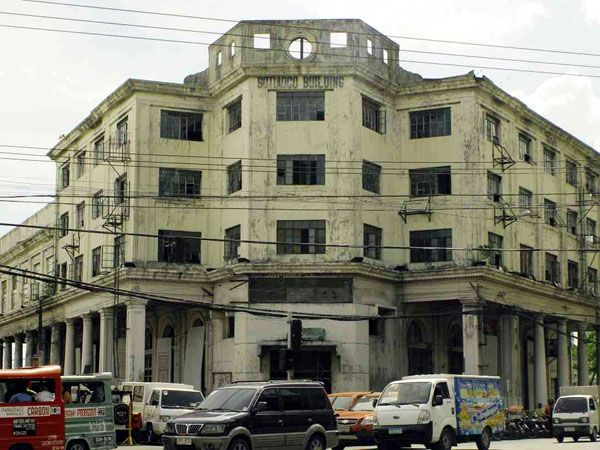Chinese group seeks to convert Cebu building into museum
CEBU CITY—A 99-year-old building in downtown Cebu City has just been given another lease on life.
A year after Cebu City Mayor Michael Rama condemned the Gotiaoco Building, the city council declared it as a historical landmark.
The move came after Sugbu Chinese Heritage Museum Foundation Inc. (SCHMFI) expressed plans to convert the building into a museum that would showcase Chinese heritage in Cebu.
If this materializes, it will be the first of such a museum in Cebu.
SCHMFI, a leading institution seeking to promote and preserve Chinese-Cebuano heritage and culture, still does not have a museum in Cebu.
Article continues after this advertisementSCHMFI wants to preserve the building which is one of the oldest structures in Cebu City.
Article continues after this advertisementCommercial edifice
The Gotiaoco Building on M. C. Briones Avenue in Barangay Sto. Niño was built as a commercial structure in 1914 by Chinese trader Pedro Gotiaoco, who was from Fukien Province in China.
Gotiaoco (1856 to 1921) was a rich Chinese immigrant who established Gotiaoco Hermanos Inc., an agricultural trading firm. Among his grandsons is tycoon John Gokongwei.
In the 1930s, the building was leased and used as a Cebu branch of the Manila-based Heacock’s Department Store, which was the first large-scale department store in Cebu, said Cebuano historian Joebers Bersales.
The American-owned department store occupied the building’s first to third floor. They installed an air-conditioning system and elevator in the building, which was a first in Cebu City.
During World War II, fire destroyed the Gotiaoco Building. Gotiaoco’s descendants, the Gotianuy family, restored the building to make it look like the original structure, except for a clock in the old structure.
Bersales said that during that time, the top floor of the building was also used as offices of Cebu’s first AM radio station, kzRC, which was later renamed dyRC.
Government property
The Gotiaoco Building, which sits on property owned by the Department of Environment and Natural Resources (DENR), was later leased to the city government and used as a warehouse and office of its market operations division because it is just a block away from Carbon Market, the city’s biggest public market.
Bersales said that while the Gotianuys took over the ownership of the almost a century-old structure, the property where it stands is owned by the DENR.
Pedro Gotiaoco was among the beneficiaries of the government’s standard 99-year foreshore lease agreement which lapsed this year.
Bersales said that with the lapse of the agreement, the structure would have to be turned over to the city government.
But a 6.9-magnitude earthquake that hit Cebu and some parts of the Visayas on Feb. 6, 2012, left cracks on the concrete walls and columns of the building.
Museum plan
Engineer Ariel de la Cruz, the city’s structural consultant, declared the structure unfit for occupancy because it showed signs of disintegration and could collapse anytime.
Mayor Rama ordered the building vacated and its perimeter fenced with G.I. sheets.
But SCHMFI didn’t want the building to be reduced to dust.
The foundation took over the lease of the property in
March 2012 from the city government with a plan to convert the building into a museum.
John Vincent Castro of SCHMFI said the museum would be a good venue to recognize the contribution of the Chinese community to Cebu’s economic growth.
These contributions are in trade and industry, language, science and technology, arts, lifestyle, religion and education.
To complement the plan of SCHMFI, Cultural and Historical Affairs Commission (CHAC) recommended to the city council that the Gotiaoco Building be declared a historical landmark.
The recommendation became the basis of Councilor Margot Osmeña for an ordinance that did just that.
“There is a need to support the efforts of CHAC in declaring properties in Cebu City that have historical significance to help promote heritage conservation,” Osmeña’s ordinance read.
The ordinance was approved during the city council session on Feb. 13.
“The said structure has a touch of neoclassic, American period architecture, which is evidenced by its arcaded facades, window proportion that partakes of the golden mean and a heavily set reinforced concrete outer shell,” the ordinance added.
Mayor Rama said the declaration would complement his plan to establish a heritage village near City Hall and campaign for the revitalization of downtown Cebu City.
Osmeña said in an interview that it would now be up to SCHMFI to spend for the building’s rehabilitation.
“They (the foundation) can very well take care of the building. They also have items to secure from the Chinese community and put up for display at the museum,” Rama said.
